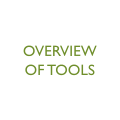Knowledge fuels change
For over a decade, Energypedia has shared free, reliable energy expertise with the world.
We’re now facing a serious funding gap.
Help keep this platform alive — your donation, big or small, truly matters!
Thank you for your support
Difference between revisions of "Toolbox on SPIS"
***** (***** | *****) |
***** (***** | *****) |
||
| Line 2: | Line 2: | ||
{{SPIS Banner}}<br/> | {{SPIS Banner}}<br/> | ||
| − | = '''<span style="color: rgb(135, 150, 55);"> | + | = '''<span style="color: rgb(135, 150, 55);">Toolbox on Solar Powered Irrigation Systems (SPIS)</span>'''<br/> = |
The Toolbox on Solar Powered Irrigation Systems (SPIS) is designed to enable advisors and practitioners in the field of solar irrigation to provide broad hands-on guidance to end-users, policy-makers and financiers. It comprises 8 modules supplemented with tools and covers critical aspects such as<br/> | The Toolbox on Solar Powered Irrigation Systems (SPIS) is designed to enable advisors and practitioners in the field of solar irrigation to provide broad hands-on guidance to end-users, policy-makers and financiers. It comprises 8 modules supplemented with tools and covers critical aspects such as<br/> | ||
| Line 31: | Line 31: | ||
=== '''<span style="color: rgb(135, 150, 55);">Contents of the Toolbox</span>'''<br/> === | === '''<span style="color: rgb(135, 150, 55);">Contents of the Toolbox</span>'''<br/> === | ||
| − | <span lang="en-us | + | <span lang="en-us">''Click on bubble to get more information about the module and supplemented tools aligned.''</span><br/> |
{{SPIS Bubbles}}<br/> | {{SPIS Bubbles}}<br/> | ||
| Line 47: | Line 47: | ||
<span class="mw-customtoggle-SPIS3" style="color: blue; font-size: small; font-weight: bold; float: right; display: inline-block;"><span class="mw-customtoggletext">read more</span></span> | <span class="mw-customtoggle-SPIS3" style="color: blue; font-size: small; font-weight: bold; float: right; display: inline-block;"><span class="mw-customtoggletext">read more</span></span> | ||
<div class="mw-collapsible mw-collapsed" id="mw-customcollapsible-spis3"> | <div class="mw-collapsible mw-collapsed" id="mw-customcollapsible-spis3"> | ||
| − | <span style="color: rgb(135, 150, 55);">'''Published by'''</span><br/>Deutsche Gesellschaft für Internationale Zusammenarbeit (GIZ) GmbH on behalf of BMZ as a funding partner of the global initiative Powering Agriculture: An Energy Grand Challenge for Development (PAEGC) and <br/>The Food and Agriculture Organization of the United Nations (FAO)<br/> | + | <span style="color: rgb(135, 150, 55);">'''Published by'''</span><br/>Deutsche Gesellschaft für Internationale Zusammenarbeit (GIZ) GmbH on behalf of BMZ as a funding partner of the global initiative Powering Agriculture: An Energy Grand Challenge for Development (PAEGC) and<br/>The Food and Agriculture Organization of the United Nations (FAO)<br/> |
<span style="color: rgb(135, 150, 55);">'''Responsible'''</span><br/>GIZ Project Sustainable Energy for Food – Powering Agriculture<br/> | <span style="color: rgb(135, 150, 55);">'''Responsible'''</span><br/>GIZ Project Sustainable Energy for Food – Powering Agriculture<br/> | ||
| Line 53: | Line 53: | ||
<span style="color: rgb(135, 150, 55);">'''Contact'''</span><br/>[mailto:Powering.Agriculture@giz.de Powering.Agriculture@giz.de]<br/> | <span style="color: rgb(135, 150, 55);">'''Contact'''</span><br/>[mailto:Powering.Agriculture@giz.de Powering.Agriculture@giz.de]<br/> | ||
| − | <span style="color: rgb(135, 150, 55);">'''Download'''</span><br/>''''''[[Toolbox_on_SPIS|https://energypedia.info/wiki/Toolbox_on_SPIS]]''''''<br/> | + | <span style="color: rgb(135, 150, 55);">'''Download'''</span><br/>''''''<b>[[Toolbox_on_SPIS|https://energypedia.info/wiki/Toolbox_on_SPIS]]</b>''''''<br/> |
<span style="color: rgb(135, 150, 55);">'''About'''</span><br/>Powering Agriculture: An Energy Grand Challenge for Development: [https://poweringag.org https://poweringag.org]<br/> | <span style="color: rgb(135, 150, 55);">'''About'''</span><br/>Powering Agriculture: An Energy Grand Challenge for Development: [https://poweringag.org https://poweringag.org]<br/> | ||
Revision as of 12:08, 2 November 2017

Introduction
Do want to know all about SPIS – Solar Powered Irrigation System : Please go to the newly launched standalone Solar Powered Irrigation Systems (SPIS) website (www.spis-toolbox.org) , featuring three SPIS toolbox:
- Toolbox for beginners,
- Toolbox for farmers (new SPIS Web based App – to calculate design of the pumps),
- the Toolbox for experts - the updated version - Version 6
and additional resources (Publication about SPIS).
The Toolbox on Solar Powered Irrigation Systems (SPIS) is designed to enable advisors, service providers and practitioners in the field of solar irrigation to provide broad hands-on guidance to end-users, policy-makers and financiers. Risks related to system efficiency, financial viability and the unsustainable use of water resources can thus be minimized. The Toolbox comprises informative modules supplemented with user-friendly software tools (calculations sheets, checklists, guidelines). read more
Modules and tools touch upon:
- assessing the water requirements,
- comparing the financial viability,
- determining farm profitability and payback of investment in SPIS,
- sustainably design and maintain a SPIS,
- highlight critical workmanship quality aspects,
- and many more.

Toolbox on Solar Powered Irrigation Systems (SPIS)
The Toolbox on Solar Powered Irrigation Systems (SPIS) is designed to enable advisors and practitioners in the field of solar irrigation to provide broad hands-on guidance to end-users, policy-makers and financiers. It comprises 8 modules supplemented with tools and covers critical aspects such as
- assessing the water requirements,
- comparing the financial viability,
- determining farm profitability,
It furthermore gives insight into how SPIS are designed, set up and maintained. It strives to find the optimal design of a system, thereby avoiding risks related to system efficiency, financial viability and the unsustainable use of water resources. read more
Background
Most water pumps utilized for irrigation purposes worldwide are powered by engines run on fossil fuels (diesel, petrol, gas) or on electricity supplied from the grid. Fossil energy sources are limited and emissions from their utilization have negative climate impacts. At the same time, the electricity supply in many developing countries is often insufficient and unreliable or wholly absent in rural areas. Moreover, prices of solar panels have reduced while the quality has improved. Today, solar pumps for irrigation have become an economical, technical and environmentally viable.
Objective
Major hindrance for the uptake of the technology is still a lack of information on solar pumps for irrigation and its relatively high investment costs. The knowledge on the potentials, limitations and risks of Solar Powered Irrigation Systems (SPIS) is incomplete among extension officers, suppliers, policy makers, and other stakeholders. As a result, farmers as a major end-user group struggle to get sound information in order to take informed decision and maintain a SPIS well. Often SPIS are designed in a way that farmers needs and site specific conditions (environmental, agronomic and technical aspects) are not comprehensively addressed. Consequently, the potential of the technology is not optimized, or worse, has negative ecological and economic impacts. The Toolbox addresses this issue by providing a holistic set of knowledge through which SPIS advisors can guide their clients towards a financially and environmentally sound decision.
Target Group
The Toolbox serves all stakeholders who advise on SPIS end-users, finance investment in SPIS or draft policies for SPIS:
- agricultural (irrigation) extension officers
- technology suppliers
- credit officers / risk managers in financing institutions
- policy advisors
Contents of the Toolbox
Click on bubble to get more information about the module and supplemented tools aligned.
Imprint
The Toolbox on Solar Powered Irrigation Systems is made possible through the global initiative Powering Agriculture: An Energy Grand Challenge for Development (PAEGC). In 2012, the United States Agency for International Development (USAID), the Swedish International Development Cooperation Agency (Sida), the German Federal Ministry for Economic Cooperation and Development (BMZ), Duke Energy, and the Overseas Private Investment Cooperation (OPIC) combined resources to create the PAEGC initiative. The objective of PAEGC is to support new and sustainable approaches to accelerate the development and deployment of clean energy solutions for increasing agriculture productivity and/or value for farmers and agribusinesses in developing countries and emerging regions that lack access to reliable, affordable clean energy.
read more
Published by
Deutsche Gesellschaft für Internationale Zusammenarbeit (GIZ) GmbH on behalf of BMZ as a funding partner of the global initiative Powering Agriculture: An Energy Grand Challenge for Development (PAEGC) and
The Food and Agriculture Organization of the United Nations (FAO)
Responsible
GIZ Project Sustainable Energy for Food – Powering Agriculture
Contact
Powering.Agriculture@giz.de
Download
'https://energypedia.info/wiki/Toolbox_on_SPIS'
About
Powering Agriculture: An Energy Grand Challenge for Development: https://poweringag.org
Version
0.2 (October 2017)
Disclaimer
The designations employed and the presentation of material in this information product do not imply the expression of any opinion whatsoever on the part of the Food and Agriculture Organizations of the United Nations (FAO), Deutsche Gesellschaft für Internationale Zusammenarbeit (GIZ) GmbH or any of the PAEGC Founding Partners concerning the legal or development status of any country, territory, city or area or of its authorities, or concerning the delimitation of its frontiers or boundaries. The mention of specific companies or products of manufacturers, whether or not these have been patented, does not imply that these have been endorsed or recommended by GIZ, FAO, or any of the PAEGC Founding Partners in preference to others of a similar nature that are not mentioned. The views expressed in this information product are those of the author and do not necessarily reflect the views or policies of GIZ, FAO, or any of the PAEGC Founding Partners.
GIZ, FAO and the PAEGC Founding Partners encourage the use, reproduction and dissemination of material in this information product. Except where otherwise indicated, material may be copied, downloaded and printed for private study, research and teaching purposes, or for use in non-commercial products or services, provided that appropriate acknowledgement of GIZ and FAO as the source and copyright holder is given.
© GIZ and FAO, 2017





























